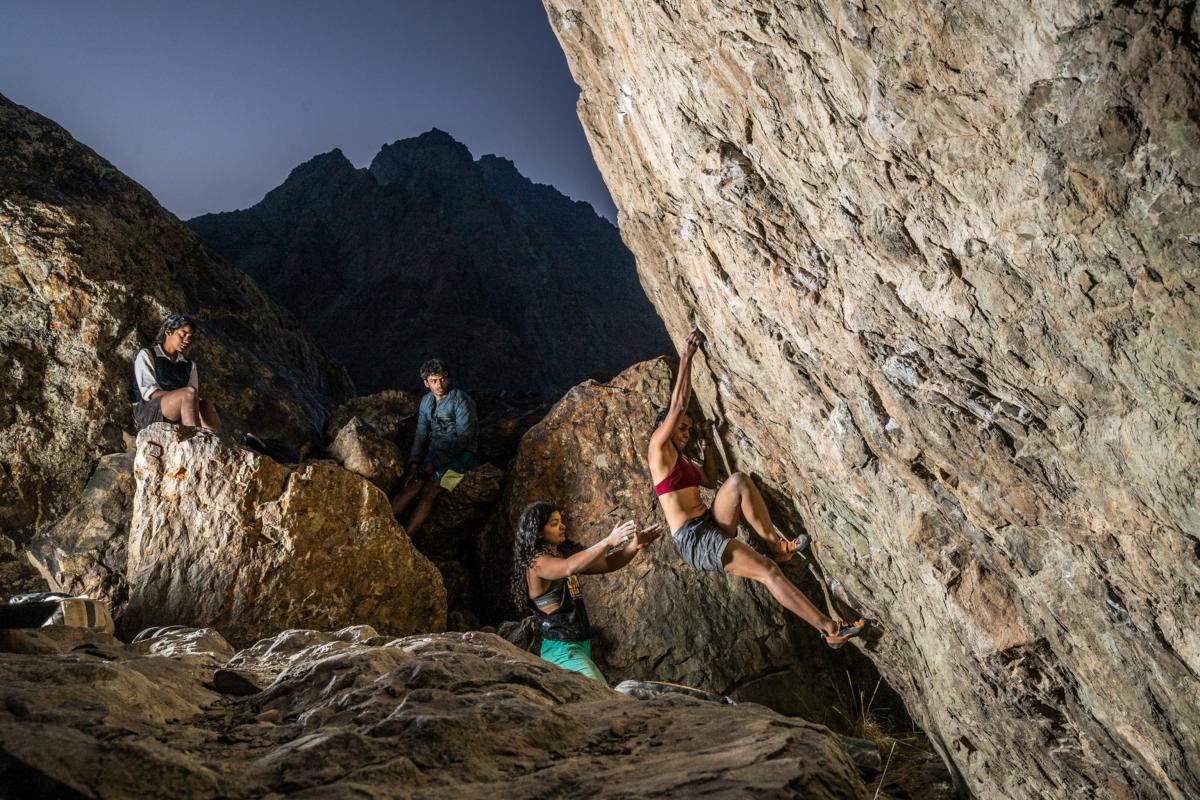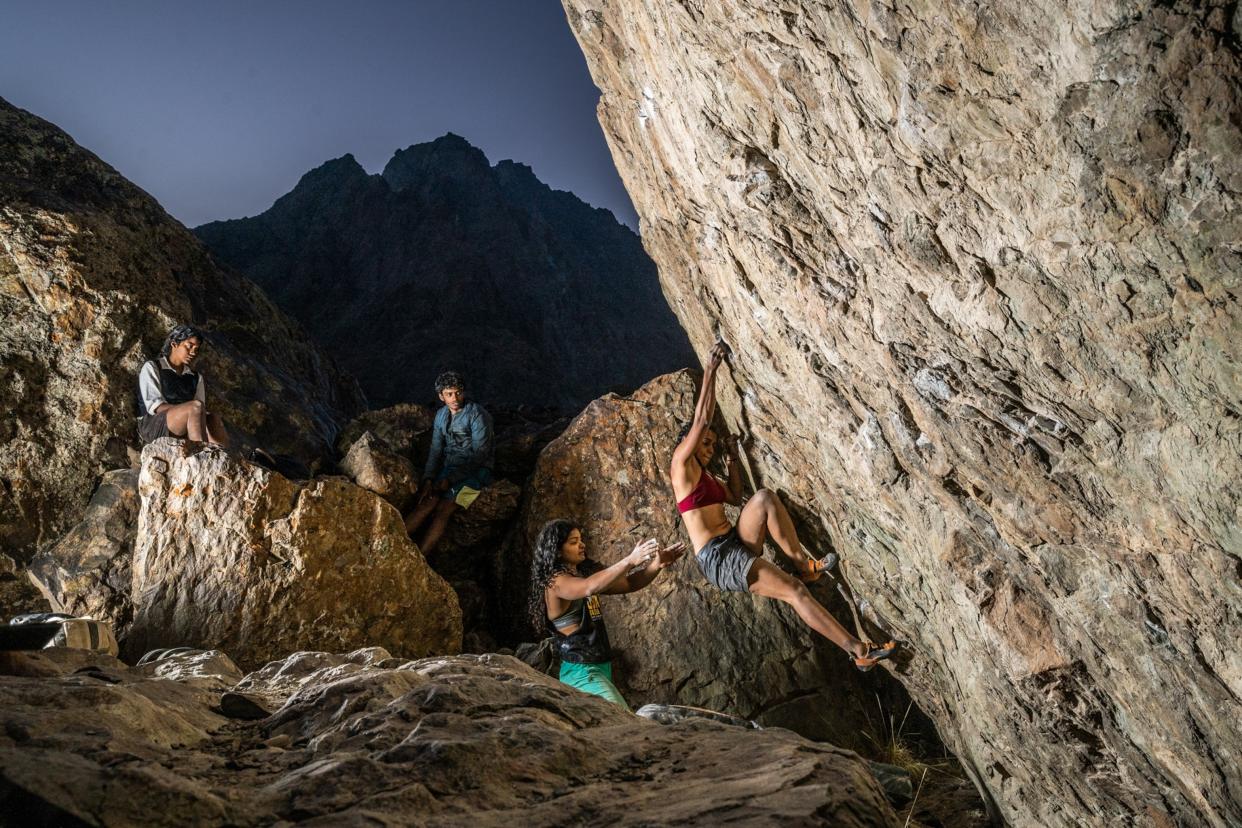
In the quiet Suru Valley, rugged roads snake past pastoral villages that blend vernacular and Tibetan architecture. As far as the eyes can see, brushstrokes of gradient green meadows sprawl across the lower region over almost two miles (3,000 meters)—fed by the ribboning Suru River and melting glaciers—juxtaposed with the stark contrast of the upper valley, where mountains lay in repose like meditating yogis. The air is thin, the weather nippy, and the sun pierces through the clouds.
For Ansen Antony, a former software engineer turned commercial photographer, hiking through this region in Ladakh—a cold desert in India’s northern frontier—was never a possibility until locals tipped him off. He abandoned his original plan to trek in Jammu and Kashmir’s Pahalgam in late July to veer off course for a more than 50-mile trek on foot from Parkachik to Kargil over a week.
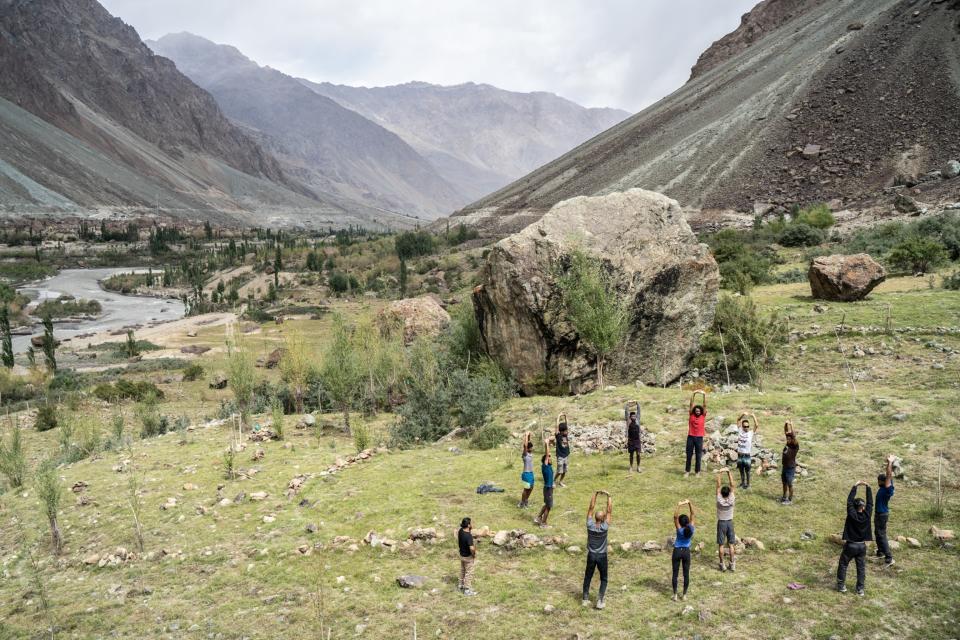

(Searching for snow leopards in Ladakh, India.)
En route, the highlight was an uncharted day hike from Panikhar, a base hub for adventure expeditions, via a ridge to Parkachik and back. “I set out at dawn and returned by mid-afternoon,” he recalls. “As the trail steepened, it wasn’t easy to keep going, but the distant sight of the Nun Kun peaks and the Parkachik Glacier made every step worthwhile.”
An erstwhile Buddhist kingdom, Ladakh’s dramatic landscapes feel like the Himalayas in overdrive, beckoning both spiritual seekers and adventurers. Leh, the bustling capital along with the sand dune-swept Nubra Valley and the lakefront Pangong Tso, reign as magnets for mountain bikers, rock climbers, and trekkers despite their treacherous paths. The often-overlooked Suru Valley, tucked away on the western edge near Kargil, is gaining favor among outdoor enthusiasts. Part of its allure lies in its distinctive terrain and boulders that not only showcase raw natural grandeur, but also present challenges for eager hikers.
The layered past of Suru Valley
For centuries, Ladakh was a cultural crossroad on the Silk Route, with Suru Valley as a key hub for internal trade. The latter, originally part of the Purig kingdom with Tibetan roots, transformed after the arrival of Islam with Baltistani preachers in medieval times. Today, the valley’s inhabitants are predominantly Shia Muslims. After India’s partition in 1947, the Indian-administered portion of Ladakh remained within Jammu and Kashmir until 2019, when it became part of the newly formed Ladakh union territory. However, Suru Valley remained largely unknown until recent decades.
It’s impossible to escape the mountaineering spirit that mantles the region, whose tourism history is deeply intertwined with its majestic ranges. “Many of these hiking trails, including those passing through Bobang La and Lomvilad La, were ancient routes used by Trans-Himalayan traders from Kashmir and Ladakh,” says Muzammil Husain of Roots Ladakh, a Kargil-based outfitter that has been organizing hikes in Suru Valley and Zanskar region for the past decade.
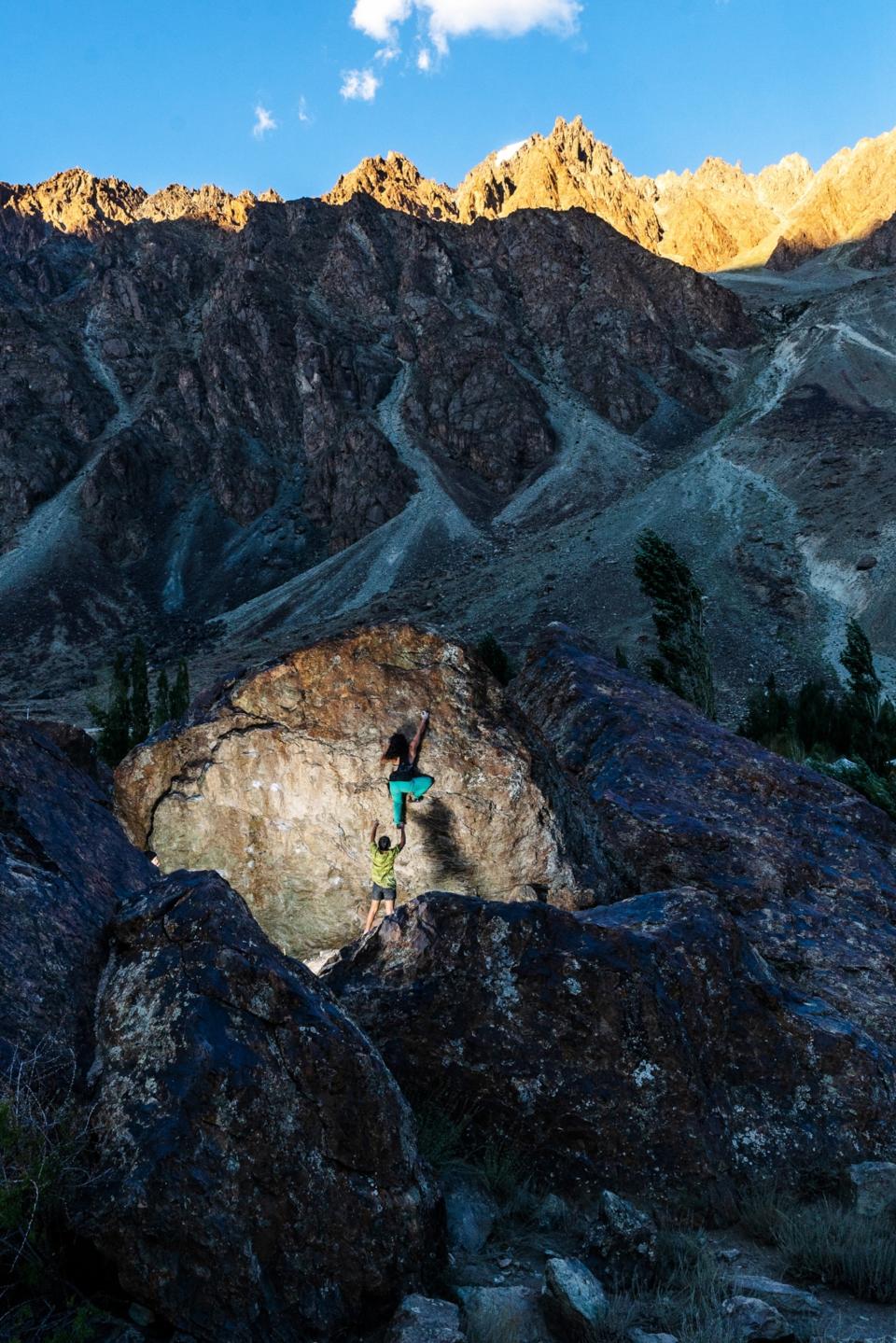

Early 20th-century mountaineering expeditions to the lofty Nun Kun massifs—the highest peaks in the Zanskar Range at 23, 409 and 23,218 feet (7,135 and 7,077 meters) respectively—highlighted its potential for adventure. Tourism began to flourish in the 1970s with the opening of the Srinagar-Leh highway and improved air links, which encouraged more travelers to venture into the Himalayan stretch. However, the valley’s proximity to the Line of Control, a sensitive military border separating India and Pakistan, limited its exposure.
This didn’t deter explorers from navigating the largely uncharted territory, which now draws up to 30 expedition groups, each with as many as 15 members, every season. “Suru is conveniently located such that multi-day hikes connect it to adjacent valleys like Zanskar, Dras, and even the famous Warwan Valley in Jammu,” Tenzing “Jammy” Jamyang says.
(These stunning photos reveal the beauty of climbing.)
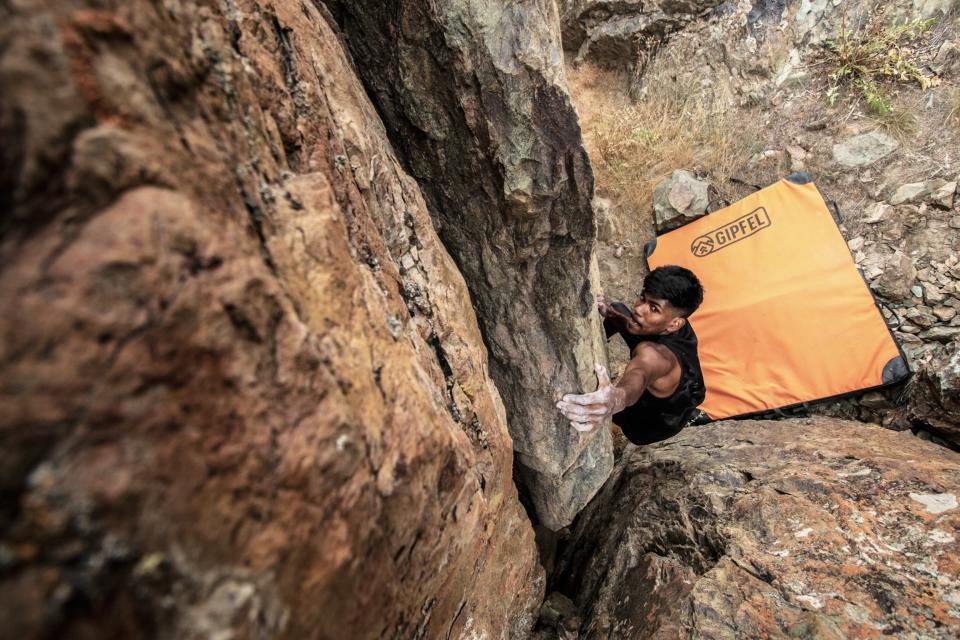

An emerging destination for outdoor enthusiasts
The 43-year-old Leh native has spent the last two decades scouting Ladakh for promising bouldering spots. He first stumbled upon Suru in 2010, returning in 2012 and in subsequent years to survey the area after realizing its potential. In 2016, Jamyang, along with co-founder Suhail Kakpori, launched the Suru Boulder Fest. “The idea was to open up this area to more people as we wanted climbers from the world over to experience the thrill of these rocks and the region’s beautiful, dry weather,” Jamyang explains.
Over time, additional adventure activities like highlining, kayaking, longboarding, yoga, tai chi, and mountain biking were introduced, leading to the festival’s official rebranding as Suru Outdoor Fest in 2019. Its youthful spirit quickly garnered global attention, and that same year, it won the UIAA Rock Climbing Festival Award, shining a spotlight on both the event and the region. Now in its eighth year, the international festival, held annually between late August and early September in Gontabsa village, has grown from 40 to 250 participants arriving from 20 countries. Its evolution beyond its original scope also encourages more local participation and empowers young girls from the Shia community, with “female attendees hosting workshops to educate them about menstrual health and teach them to make sanitary pads,” notes Jamyang.
(Meet the Himalayan trekking guide reclaiming the mountains for women.)
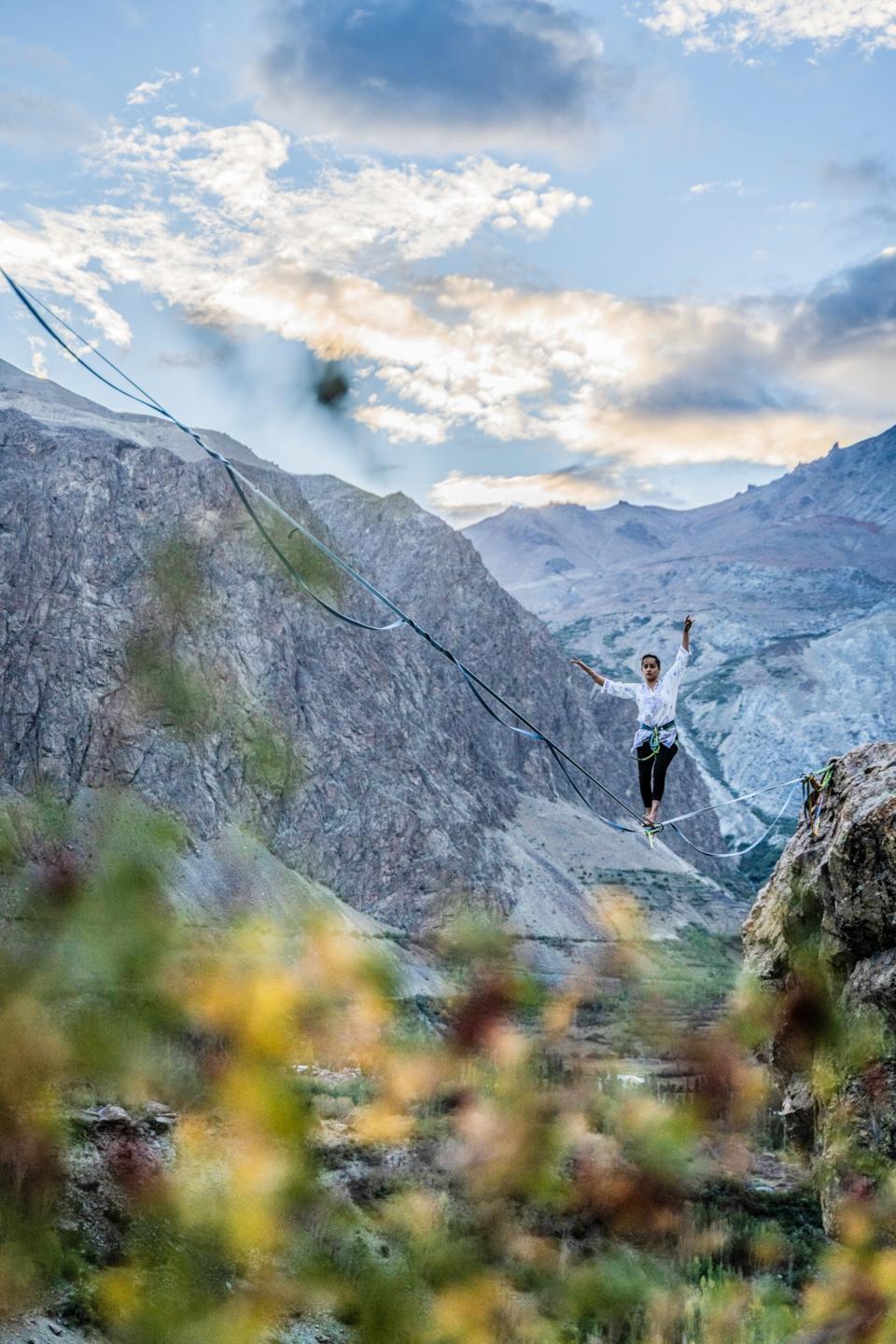

A burgeoning hiking haven
Although most days begin with athletes hiking to nearby bouldering crags with crash pads in tow, not everyone is there for the climb. Some attendees opt for scenic hikes on rest days, soaking in sigh-inducing vistas. “There’s an incredible overnight lake hike that gets you close to nature, with poplar trees, bushes, and even wild animals,” says Amrit Jose Appaden, an exploratory rock climber and guide who has frequented the festival for three years. He notes the challenges—altitudes nearing 13,123 feet (4,000 meters), lack of defined trails, and the need for self-sufficiency—but adds that it’s manageable if “you’re savvy with navigation.”
There’s no dearth of short- and multi-day hikes in the vicinity. The Gontabsa Meadow hike, a remote and demanding four to six-hour trek starting from the festival campsite, comes highly recommended, along with the relatively straightforward Thasgam Meadow and Tambis Waterfall hikes, both popular day trips included in the festival agenda.
“The lesser known but challenging Shafat La hike, which leads to the Mt. Kun basecamp, is stunning,” suggests Husain, who spent most of his childhood summers exploring Suru’s undulating plateaus. “For an offbeat experience, it’s worth considering Itchu La hike, starting from the tiny hamlet of Itchu, nestled between two valleys that lead to Rangdum village over four days.”
Though Suru’s hiking scene remains niche, experts believe it has a long road ahead before becoming the next major adventure hotspot. Road improvements in the valleys have caused some trails to fade, and additional hurdles include a lack of hotels and well-maintained restaurants; and accommodations are limited to homestays, primarily in the bowl-shaped Sankoo village.
“Local resources are scarce, and finding local guides is difficult,” Husain adds to the list of drawbacks, mentioning that rescue operations are not streamlined, leaving immediate action in the hands of the trekking crew in case of emergencies. But for those ready to embrace the rough edges and forgo creature comforts, Suru Valley’s less-trodden pathways offer the answers.
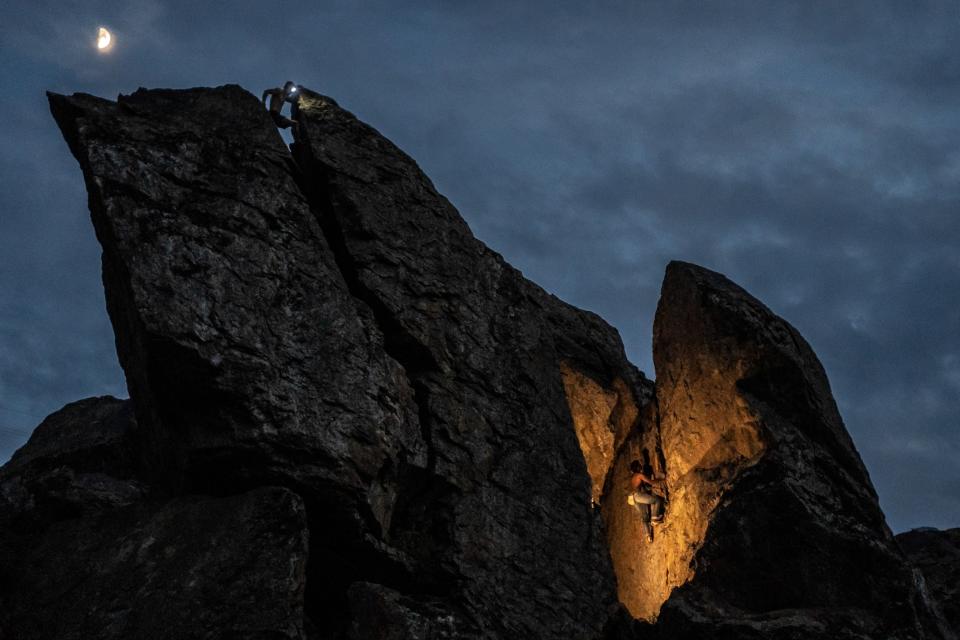

Suru Valley travel tips for hikers and rock climbers
Regular flights connect Delhi to Leh (Ladakh) and Srinagar (Jammu and Kashmir). Suru is 191 miles from Leh and 181 miles from Srinagar, with both routes passing through Kargil, about 62 miles from the valley. Shared taxis and buses are common public transport options.
Travelers arriving in Leh should get acclimatize for at least 48 hours before heading to high-altitude areas.
Though the road to Suru is accessible year-round, heavy snowfall in winter often causes roadblocks. The best time to visit is between May and September, when mountaintop temperatures are in the single digits and can reach up to 80°F (27°C) in the lower valley.
Hiking here is challenging and requires moderate fitness due to the altitude gain. With no local rental shops, be sure to pack essential gear: sturdy trekking shoes, a first aid kit, sunglasses, walkie-talkies, a hat, a water bottle, and snacks.
Again, outfitters are recommended for multi-day treks because of no nearby rescue operations or teams to help hikers or rock climbers in case of an emergency.
Pooja Naik is an independent journalist whose work has appeared in BBC Travel, National Geographic Traveller India, Conde Nast Traveller India, and other outlets. Follow her on Instagram.
Sayandeep Roy is an independent photographer based in India, whose work has appeared in Condé Nast Traveler India, The Caravan, People’s Archive or Rural India and National Geographic Traveller India.

David Turner is a globe-trotting journalist who brings a global perspective to our readers. With a commitment to shedding light on international events, he explores complex geopolitical issues, offering a nuanced view of the world’s most pressing challenges.

